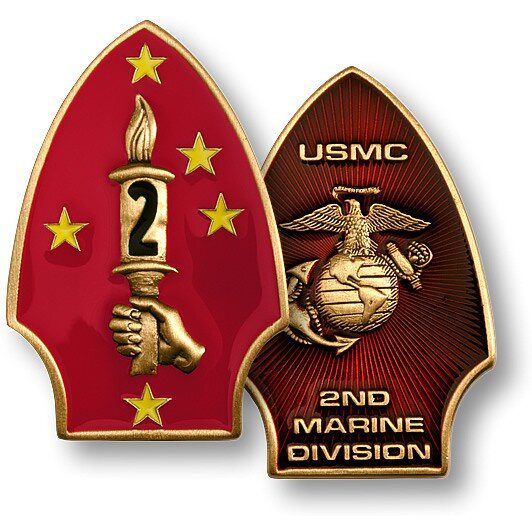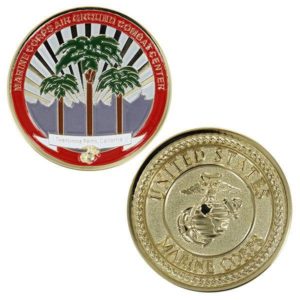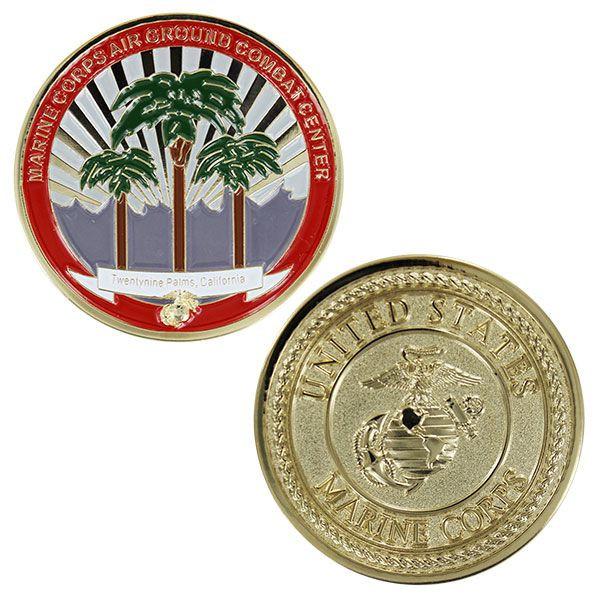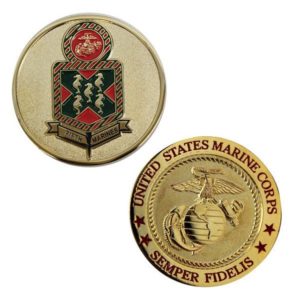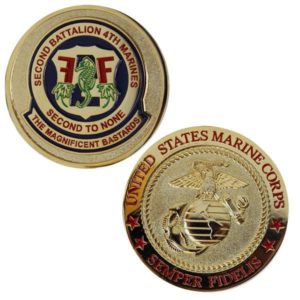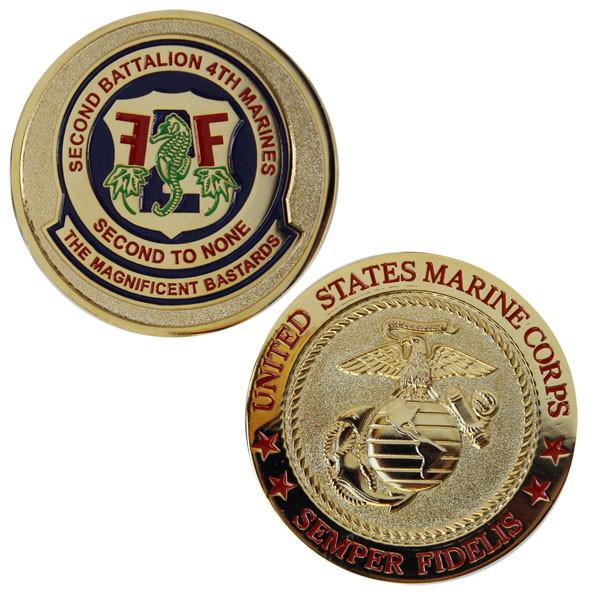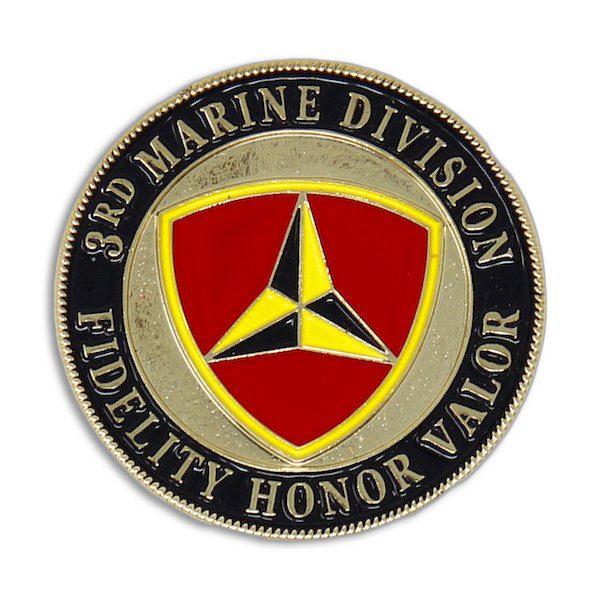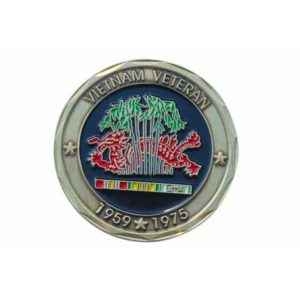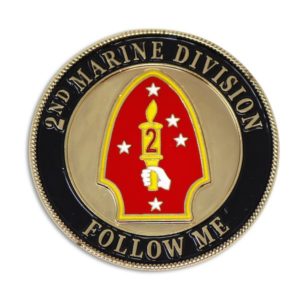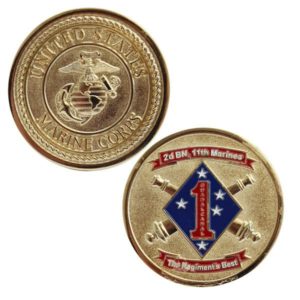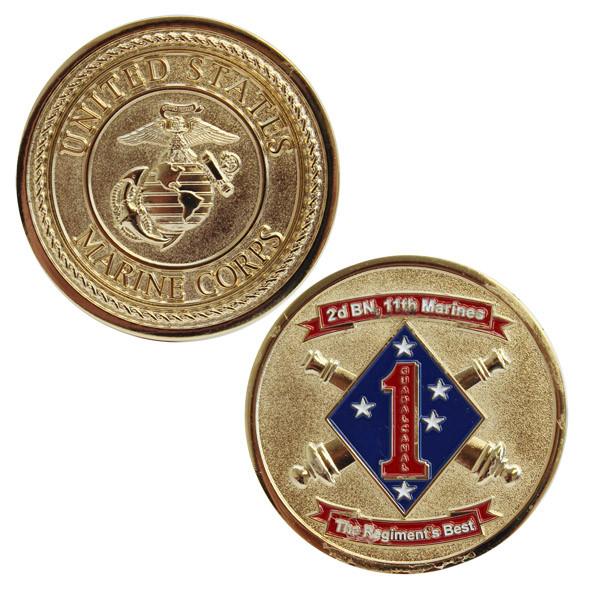Description
This brass coin salutes the 2nd Division of the U.S. Marines. Struck in a brass alloy, this coin has an attractive use of enamel, making a striking impression. The reverse contains the logo of the Marines set in a semitransparent red enamel that allows the look of radiance.
Officially organized in 1941, the 2nd Marine Division began in 1936 as the 2nd Marine Brigade. Prior to U.S. entry into World War II, the 2nd Marine Division served in Shanghai, China and in Iceland, but achieved its acclaim by landing the first Americans on foreign soil on the Solomon Islands about an hour before the invasion of Guadalcanal. The Silent Second also left blood on the sands of Guadalcanal, Tarawa (earning a Presidential Unit Citation), Saipan, Tinian, and Okinawa, before participating in the occupation of Japan.
Most recently returned from Al Anbar as part of Operation Iraqi Freedom, the Second has stood tall in Lebanon, the Cuban Missile Crisis, the Dominican Republic, Grenada-Carriacou, Operation Just Cause (Panama), and Operations Desert Shield and Desert Storm (Iraq). This coin honors the Silent Second’s valiant fighting spirit and legacy of bravery and sacrifice in protecting America’s freedom against crushing odds in any part of the world.
This coin is minted in a brass alloy and coated with an antique bronze finish. Emblazoned with the 2nd Marine Division insignia, with the Marine emblem on the reverse surrounded by translucent red enamel. Each coin comes packaged with a detailed header card that describes the mission and history of the Silent Second.
Marine Corps 2nd Marine Division Cutout Challenge Coin Features
- 2nd Marine Division Cutout Coin
- Measures 1.75″
- Professionally & individually packaged
- Made in the U.S.A.
- Licensed by the U.S. Marine Corps
2nd Marine Division – 2d MARDIV
The 2nd Marine Division, part of the II Marine Expeditionary Force, is stationed at Camp Lejeune, North Carolina. With a rich history dating back to World War II, it gained recognition for its heroic actions in major Pacific battles, including Guadalcanal, Tarawa, Saipan, Tinian, and Okinawa.
Originally formed as the 2nd Marine Brigade in 1936, it was activated as a full division in 1941. Over the years, it played pivotal roles in various conflicts, from Lebanon in 1958 to the Gulf War in the early 1990s. Today, the division comprises several regiments and battalions, maintaining a legacy of honor and service.
Marine Corps Challenge Coins
Marine Corps challenge coins are deeply rooted in military tradition. They symbolize honor, camaraderie, and individual accomplishments in the USMC.
Military challenge coins trace their roots back to ancient Rome, where custom coins rewarded exceptional feats. They later evolved into “portrait medals” during the Renaissance.
In the early US military, challenge coins were exclusive to high-ranking officers recognizing exceptional achievements. Notably, in World War I, a pilot’s coin saved his life by proving his identity. Some argue that modern challenge coin traditions, including in the Marine Corps, originated during the Vietnam War for bar entry.
Today, these coins signify specific achievements or service excellence and carry sentimental value, serving as tokens of significant moments in a Marine’s journey.
Marine Coin Check, Traditions, and Rules
A coin check is a spontaneous challenge where members must promptly display their coins.
Rules for coin checks are informal, allowing challenges to occur anywhere, anytime, by displaying the coin and shouting “coin check!” Accidentally dropping a coin counts as a deliberate challenge. Responding within ten seconds by presenting a unit’s coin is essential.
Consequences add a playful element: failure to produce a coin results in buying drinks for the challenger and others. Conversely, a successful challenge requires the challenger to buy a round for the group.
The tradition also includes coin theft, with successful thieves earning a drink. Coins are typically carried for easy access, with a widely accepted rule of “a step and a reach.” Presentation often occurs subtly during handshakes, with modifications like drilling holes or attaching them to belt buckles invalidating their challenge status.


